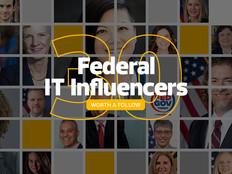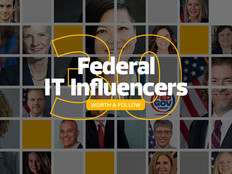Meet in the Middle
How often do we hear: We need CIOs who can support the business of government and who can talk like business leaders?
Of course, those are important attributes. To bring IT to bear on a project’s outcome, a capable C-level technology leader must comprehend at a macro level what his or her agency’s mission is trying to achieve from a business perspective.
But for technology to become a transformative tool, it’s equally important that an agency’s leaders understand IT. That part of the equation doesn’t always get adequate recognition. Not everyone in a leadership role needs to become some sort of technology guru. But senior managers do need more than a passing knowledge of current technologies, a basic understanding of what efficiencies potential tools offer and a sense of what might be required to deploy specific tools. Only an IT-savvy leader can know the questions to ask IT staff to hold them accountable for their performance.
When that combination of business-smart IT leaders and tech-astute senior managers transpires, the government’s agencies stand the greatest chance of doing something else we hear about quite often: running IT like a business.
Let’s break down exactly what that implies. Really, the notion is tied to performance results and return on investment. The phrase “running like a business” conjures up the thought of a bottom line. The government does not, however, provide a service or goods in exchange for fees that yield a profit — any time a federal organization charges either another agency or the public for something, the net result must be an even balance sheet. The fees must cover costs, nothing more. That, of course, changes the dynamic.
Even so, agencies can, should and do adopt commercial best practices when possible. Here are some possibilities:
• TOSS ASIDE THE GOAL OF PERFECTION. Often in federal IT, the perfect becomes the enemy of the good. Sometimes it pays to stop toying with a project and accept “good enough,” especially if adding just a bit to the scope adds a lot more cost, eliminating whatever tangible ROI there may have been.
This is at the heart of the work of CIOs and CTOs — figuring out which programs are critical to the mission and therefore need the best tools, and which programs can drop down to the next tier and can get by with good-enough tools.
• DETERMINE HOW YOU ALLOCATE COST. Most agencies have direct appropriations for specific programs, a revolving fund for some investments and some customer-funded programs. The challenge is blending revenue streams in a way that maximizes efficiencies.
Before an agency can begin to fine-tune spending to drive up benefits, it has to know in detail how its costs break out.
• TIE YOUR INCREMENTAL REVENUE TO INCREMENTAL COST. This is more efficient than having “sunk cost” in all technology programs. That’s why software as a service and cloud computing hold such appeal. You can reduce total infrastructure that the agency must maintain without forgoing a computing need.
• SET CHECKPOINTS THROUGHOUT A SYSTEM'S DEVELOPMENT LIFECYCLE. You need points early on at which you can fix problems or, if need be, actually kill unsuccessful projects and move the resources to flourishing projects.
• MAINTAIN A REALISTIC SCHEDULE. This might seem obvious, but people always want projects completed sooner, and therefore agencies often lose any cushion for dealing with setbacks. In my agency, we created a project management office for our Federal Digital System (a governmentwide publishing repository) that focused solely on scheduling, meeting incremental goals, and customer intimacy.
That way, there weren’t any surprises. We were in touch with every team on the program regularly, and project status was well understood by different constituencies within the agency.
A government IT team that can do all these things well, in the end, will actually be able to run smarter than many of its counterparts in business.






